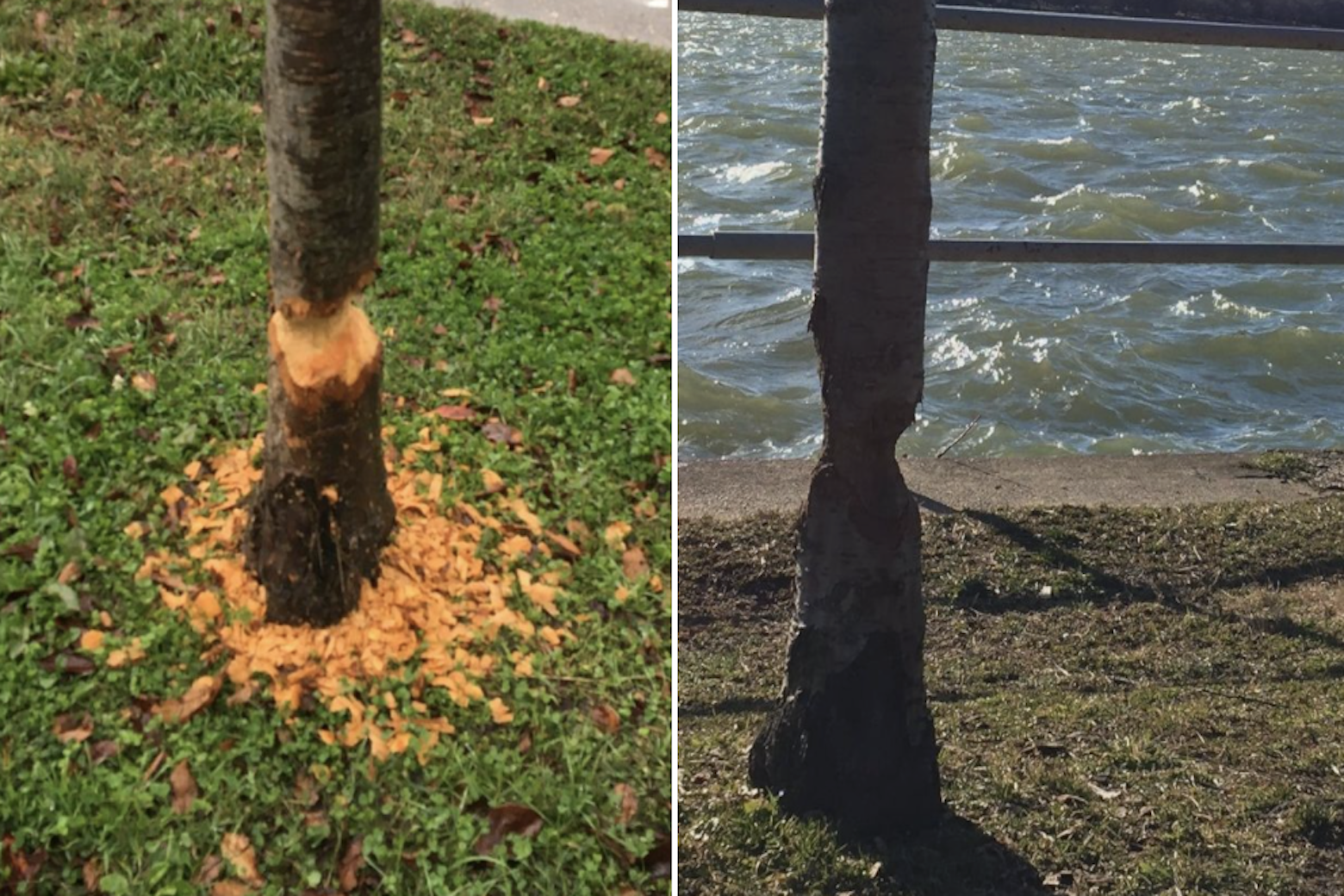
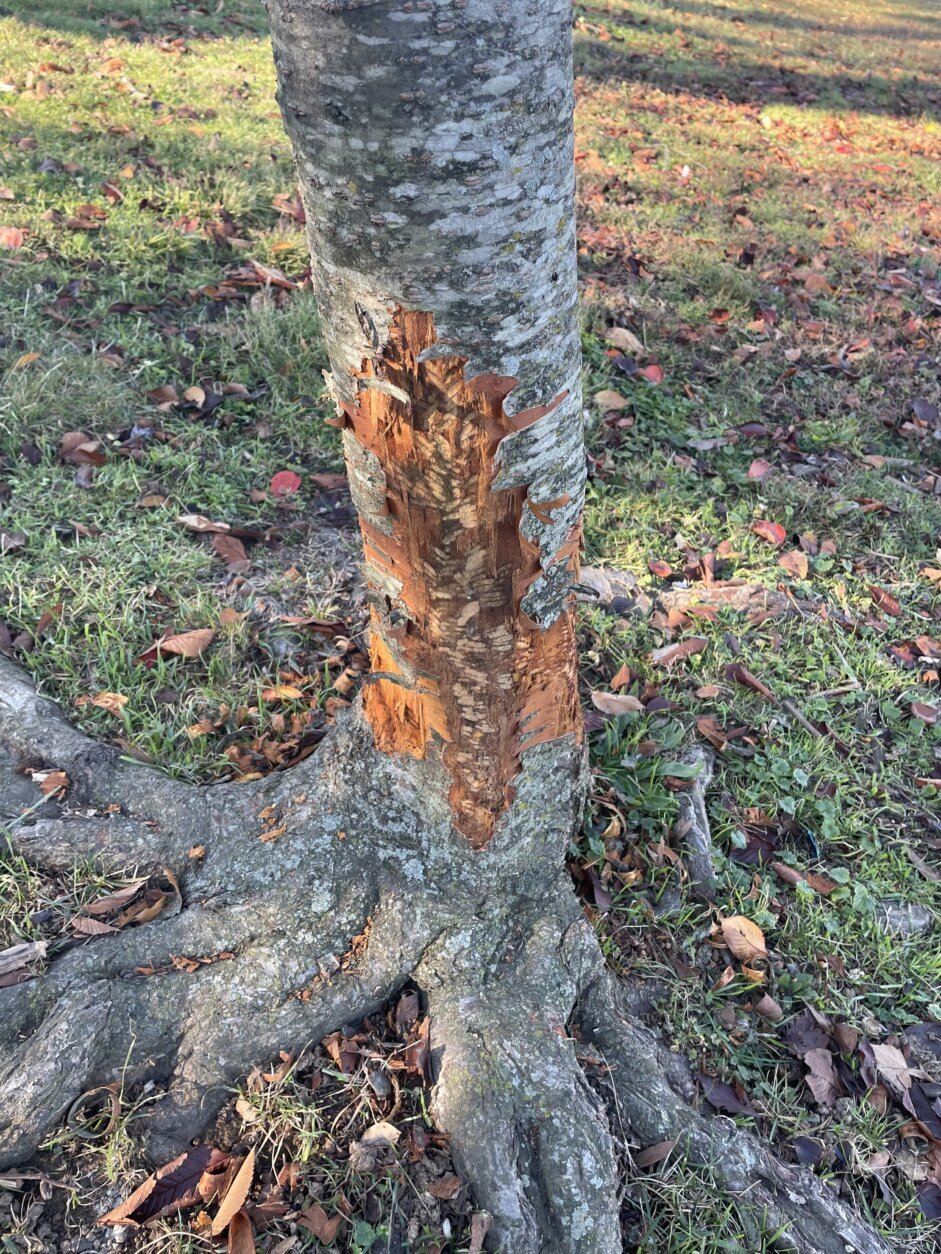
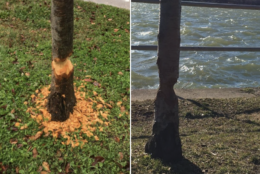
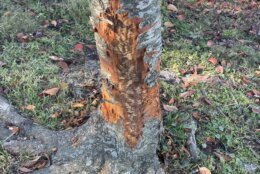
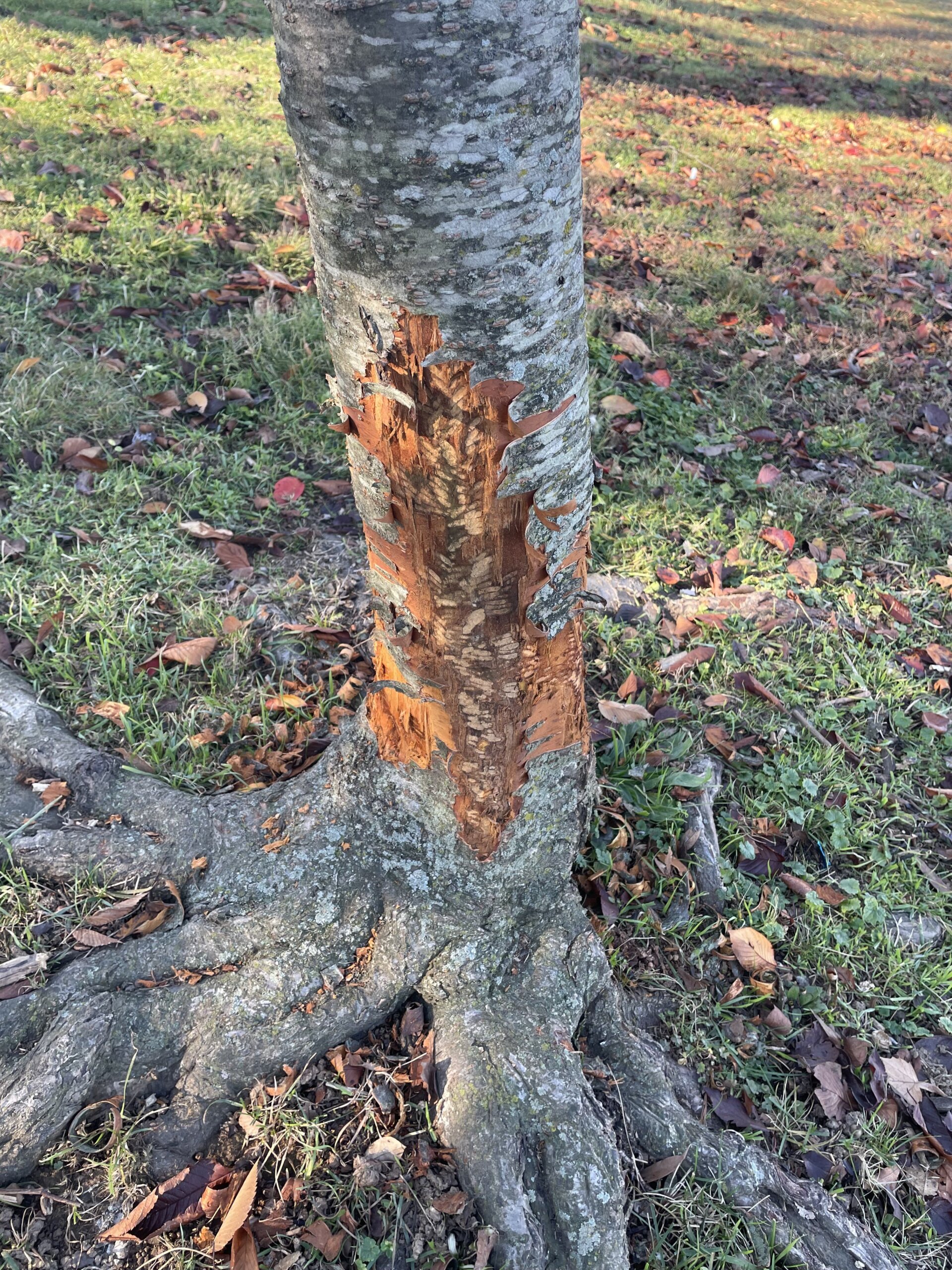
A pre-Thanksgiving feast has put a dent in one of the prized attractions in the nation’s capital — the cherry trees at the Tidal Basin in D.C. near the Jefferson Memorial.
“Over the past week, we’ve been noticing evidence of beaver activity along the Tidal Basin,” said Mike Litterst, spokesman for the National Mall and Memorial Parks for the National Park Service. “Bark that’s been chewed through, teeth marks and general indications of gnawing by the beavers.”
While it’s not clear whether the chewing is by one beaver or several, the damage is “probably upward of a dozen, maybe 15 or 16 trees in all,” Litterst said.
Litterst said it doesn’t appear the eager beavers are trying to fell the trees to use them, for example, to dam the Tidal Basin. In 1999, a beaver killed nine trees, trying to build a dam before the park service interceded.
Instead, he believes the beavers are transient, “passing through, getting a snack from the bark or the woody tissue of the tree, which is where they get their nutrients from.”
Litterst said the park service sees beaver activity fairly frequently.
“There are certain kinds of trees that beavers prefer and, unfortunately, cherry trees are on that list,” he said. “Beaver activity tends to increase in the spring and fall, as the beavers are leaving the nest for the first time, traveling and trying to find a place to establish their own habitat.”
The National Park Service will continue to monitor the beaver activity.
“Right now, we’re not doing anything to try to get rid of the beavers. This is, of course, the natural process, and beavers are just doing what they naturally do,” Litterst said.
However, the park service can try to dissuade the largest living rodents in North America.
“Our tree crews can put mesh or wire around the bottom of the trees to make them less appealing and more difficult to get to,” Litterst said. “Again, in hopes of having the beavers move on, to another area.”








